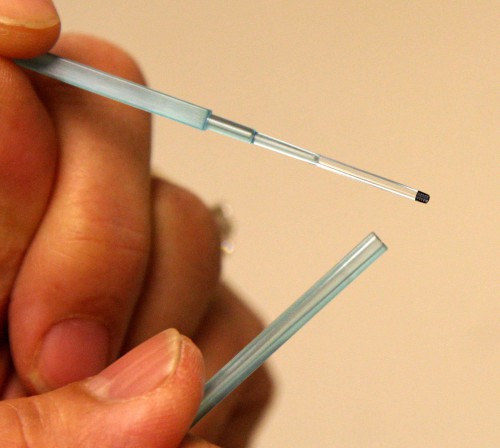Brace yourselves. Three-parent babies are coming. The Food and Drug Administration (FDA) began a public meeting on February 25 to discuss a controversial technique that can create embryos from the DNA of three people. According to the Associated Press, the technique was developed by Shoukhrat Mitalipov of the Oregon Health & Science University in Portland and has been implemented successfully in five healthy monkeys. Just like any other embryo, embryos formed from the procedure will receive half of their nuclear DNA from their biological mother and the other half from the father. The only difference is that the cytoplasm of the embryo is derived from another woman, so embryos will receive donor mitochondrial DNA, which is separate from the nuclear DNA found in a cell’s nucleus.
Obviously, more testing is necessary, but what is fundamentally wrong with embryos receiving healthy non-nuclear DNA to avoid disease? Critics of three-person fertilization claim that any mistakes that arise from the technique will lead to the introduction of mutant DNA and genetic diseases in the population, but these critics fail to recognize that scientists are not manipulating or even modifying the nuclear DNA. Because nuclear DNA is intact, problems from mutated DNA should not arise if the procedure is done correctly.
Although many people may have legitimate concerns about the potential misuse of the technique, it is not fair to see three-person fertilization as a step that will lead to a slippery slope towards eugenics. The technique is not intended to produce “super-humans” that are more intelligent or athletic than “normal” humans. Instead, the technique is for women who have mitochondrial disease and do not want their children to inherit defective mitochondria, which are maternally inherited. According to the United Mitochondrial Disease Foundation, mitochondrial disease prevents cells from generating enough energy to sustain bodily functions, so people afflicted with the disease can experience loss of motor control, muscle weakness and other symptoms. Replacing mutant mitochondrial genes with healthy genes from a donor can give children the opportunity to lead relatively normal lives without being impeded by mutated genes that are not in their control.
By far the most important obstacle to approving three-person fertilization is its potential societal impact. In an interview with the HealthDay News, Dr. Michelle H. Lewis of the Johns Hopkins Berman Institute of Bioethics, who attended FDA’s discussion, said that “A technology in a new way like this really challenges our notions of what it means to be a parent and what it means to be a family.” However, I do not foresee much change because in terms of appearance, the baby will look just like his or her original parents. Furthermore, any baby formed from the procedure will not necessarily be part of a three-person parental partnership. It is more likely that the original two parents will continue to raise the child, while the donor woman, similar to a relative or a friend, will check on the child to ensure his or her well-being. Because the child will probably live with two parents, he or she would not be part of significantly different family structures than typical two-parent embryos.
The procedure is incorrectly portrayed as one that creates three-person mutants who will corrupt the homogeneity of two-parent humans. Many people do not realize that three-parent babies, if born, will be just like any other normal two-parent baby. Three-person fertilization is just another scientific breakthrough, like evolution, the heliocentric model, or the Big Bang theory, that initially faced controversy for its novelty but later was widely accepted for explaining natural phenomena or helping humans. Let us not repeat the mistake of rejecting any breakthrough that does not conform to our beliefs.
Written by ANDREW HONGStaff Writer









